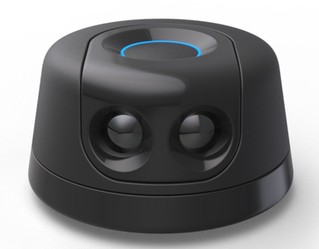InnerSpace Launches Indoor Location Mapping Service
 A local startup is disrupting the global scene with a twist on location tracking.
A local startup is disrupting the global scene with a twist on location tracking.
InnerSpace is an indoor location mapping company aimed to help organizations visualize interior locations.
“Places like the PATH in Toronto, the Eaton Centre or a hospital can be really hard to navigate. If you’ve ever been lost and standing in front of an out-of-date map, with no landmarks to guide you, you understand the need for indoor location,” says Jason Gamblen, co-founder of InnerSpace.
The team of nine is launching their service at the Mobile World Congress in Barcelona this week.
The idea sparked when co-founders Gamblen, James Wu, and Matt MacGillivray looked at GPS and maps – two technologies that were introduced more than 15 years ago – and realized that the average person spends only 10% of his or her time outside.
Wu and MacGillivray worked at Kobo Books, spearheading Kobo’s line of eReaders, apps, and reading platforms.
“We identified a gap in the market for a product that can simplify indoor mapping and location to people who expect the services we have outside to be available inside,” says Gamblen.
That market will be an estimated $250 billion in the next five years, according to the InnerSpace team.
InnerSpace is an end-to-end system that incorporates mapping, location, and spatial analytics.
The team uses robotics technology and integrated location software to deliver spatial data to businesses. More specifically, InnerSpace’s hardware system, Johnny5, uses LIDAR spatial sensing. By integrating that with Wi-Fi location and tracking, and BLE location and tracking, they are able to accurately map locations.
When the physical layout of your indoor space changes, Bricktracker will automatically detect the change and update your map itself. The Bricktracker is constantly monitoring your space for opportunities to improve product placement and marketing campaigns enabling your business to operate with effortless insights about your customers in the moment.
They will also be able to provide data to businesses within minutes.
By Spring, InnerSpace will be launching with customers in corporate space design, along with the retail and healthcare market.
Finding efficiencies in office space design, creating inventory turnover in retail, and reducing the operating costs in a hospital, are a few cases for indoor location that InnerSpace is familiar with.
But the team aims to expand into hundreds of other areas that indoor location mapping can have a big impact on.
“We want to change the world for customers across multiple categories,” says Gamblen, “as these evolve, our vision is to be the platform that powers them all.”











